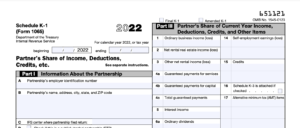What are the best investments for dentists?
You’ve invested in your education, in your practice, and in your staff, but how do you make investments for yourself to ensure the health of your personal retirement and practice? These are the reasons we wanted to discuss the best investments for dentists.
Deciding on real estate, ownership sharing, equipment and investing can feel overwhelming and confusing and dentists aren’t excluded from these feelings. Some people joke that investing can feel like gambling and dentists don’t like that risk. However, if your money isn’t growing, that is a greater loss than you can imagine.
Dental Practice Investments
While the manufacturing industry focuses on reducing “cold inventory” – inventory that becomes outdated and unused, dental practices need to focus on not “sitting” on cash. Dr. Marion Lesser understands this too well. As her dental practice grew, both in staffing and office space, so did her savings account.
“I wasn’t sure where to spend the money. Should I buy equipment? Should I get more space? I had questions and I didn’t know where to go for answers.” As the savings account grew, she began looking for a dental investment manager. She understood that the money she was sitting on should be working for her. She was right. Making investment decisions and having a long-term plan for the practice had to start with a financial advisor who understands dental practice investments.
Dr. Lesser’s dental investment manager helped her understand the multiple options she had in order to create a robust and diverse portfolio that could become the basis on which to build. A cookie-cutter approach wouldn’t work. Not only did she have dreams of purchasing a commercial building, which would take significant capital, she also wanted to fund an annual trip for her and a few staff to Ukraine to support dental health in her home country.
The Bigger ‘Why’
We often find, just as Dr. Lesser had a bigger ‘why’ for investing, so do many other dentists. That bigger reason usually has to do with why you got into dentistry to begin with. Maybe it is to provide a better life for your family, to retire comfortably, or to provide much needed services within or outside your community.
This ‘why’ is unique and is why there is no single answer to the question: what are the best investments for dentists? The best investment must line up with your specific goals and values. A dental investment manager takes the time to understand both business and personal financial and lifestyle objectives to create an actionable plan.
When it comes to investments for dentists, the practice, budget, values, and long and short-term demands must be factored in to create a strategic financial plan. If your cash isn’t working for you, you are missing out on building the business and wealth to meet your bigger ‘why’ for getting into the dental industry.
Once you have built a firm foundation with an investment strategy, you can then begin to consider what needs to happen next to get you closer to your dreams and goals. Making wise investment decisions begins with getting support and making connections that lead you closer to the outcomes you desire.
Ready to learn more? Contact us today for a free consultation with a dental investment manager.



